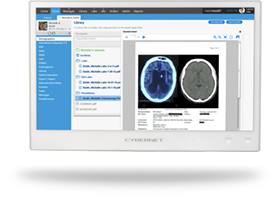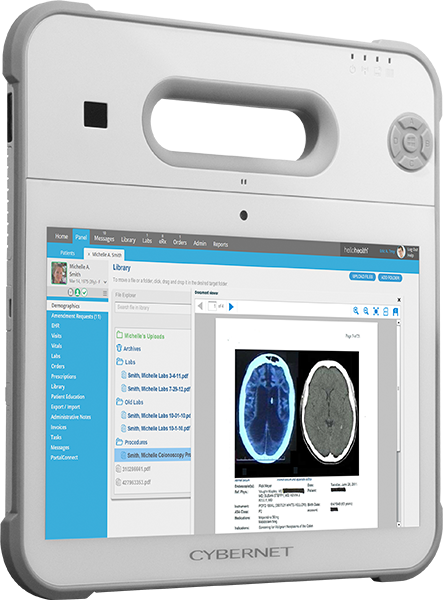The digital transformation of healthcare brought electronics to medicine. While people are familiar with EKG machines and electronic medical records, few are aware of the inroads that robotics has brought to the sector. They are there, though, increasingly in use since the first surgical robots performed a stereotactic brain biopsy in 1985.
Today, robotics can be found throughout the healthcare industry, transforming everything from surgical procedures to patient care and comfort.
- What is Robotics in Healthcare?
- Types of Robots Used in Healthcare
- Key Benefits of Robots in the Healthcare Industry
- How AI is Transforming Healthcare Robotics
- Bringing Robotics to Your Healthcare Group
What is Robotics in Healthcare?
Robotics is the engineering field that designs, builds, and operates robots, or machines that perform tasks typically done by people. Most people are familiar with the robots used in factory automation, which handle highly repetitive, hazardous, or delicate tasks such as assembling new cars.
Most robotics in medicine is aimed, unsurprisingly, towards patient care. Surgical robots, such as the Da Vinci system, are well-known examples. Other robots monitor patients, assist with mobility, and aid in physical rehabilitation.
Types of Robots Used in Healthcare
Robotics in healthcare is categorized into various types, reflecting their specific uses or specialties within the industry.
- Surgical-assistance robots are designed to augment existing surgical treatments. They do so by enhancing the surgeon's skills. As mentioned earlier, the Da Vinci robot is a well-known example of this type of medical robot.
- Sanitization and disinfection robots, as their name implies, aid in the ongoing task of cleaning hospitals and medical equipment to protect patients (and staff) from potential infections. Many use UV light and hydrogen peroxide vapors to complete their tasks.
- Hospital logistic robots prepare patient rooms, track supplies, and restock medical supplies. Many are autonomous mobile robots, or AMRs, that travel along a wire or predefined track on the hospital floor, or are controlled remotely by providers via a medical computer tablet.
- Nursing robots automatically monitor patients' vital signs as they're transported throughout the hospital.
- Rehabilitation robots are robots in the shape of exoskeletons that are placed on patients suffering severe injuries or disabilities. They provide both aid and support as the patient relearns movements, such as walking.
Key Benefits of Robots in the Healthcare Industry
Most factory automation provides benefits in the form of consistent products, reduced waste, increased productivity, and enhanced worker safety. The benefits of using robotics in medicine have a similar breakdown, although they focus on delivering health care to patients rather than products.
Surgical Robots
Robots can be built to go beyond the boundaries of the human body, like sight and manipulation. Surgical robots can enable surgeons to perform certain operations, such as minimally invasive surgeries, with greater precision and reduced risks. The result is an increase in the rate of success and a reduction in recovery time.
Companion Robots
These robots engage elderly, disabled, and hospice patients in conversation, working in tandem with the empathy and care nurses and other caregivers provide. This way, the patients do not suffer from pain, loneliness, or boredom.
Hospital Logistics Robots
Inventory tracking is a necessary and routine part of hospitals. Unfortunately, many hospitals are understaffed, which can lead to inventory shortages and mismanagement. Hospital logistics robots aid human staff in ensuring that supplies, equipment, and medication are available when and where they are needed.
Cleaning and Disinfection Robots
Sanitation is another essential task. Every part of a hospital, from the walls of a patient's room to the IP65-sealed screen of a medical computer, must be cleaned and disinfected frequently to prevent the spread of possible infections. Cleaning and disinfection mobile robots handle such vital work, freeing healthcare workers to focus more on patients and other value-driven work.
How AI is Transforming Healthcare Robotics
While artificial intelligence (AI) predates robotics in medicine, it has seen near-explosive growth since 2019 and continues to grow. AI is being used to:
- Aid in diagnostics by sorting and organizing data far faster than humans.
- Automate many tedious or time-consuming tasks, like appointment scheduling.
- Look for patterns in data to provide predictions in drug treatment.
- Converse effectively with patients and even medical staff via AI-driven chatbots.
Inroads of AI in robotics for the healthcare industry are at the cutting edge of both technologies. Medical groups are looking to leverage the combo in various ways.
- Humanoid-shaped robots that engage with patients, keeping their aging minds focused and sharp.
- The robotic arm sutures the patient's wound after an operation, a task typically performed by the surgeon or their surgical team.
- Scan and complete an ultrasound on a patient without the guidance of a medical technician.
Bringing Robotics to Your Healthcare Group
The benefits of robotics in medicine have healthcare organizations scrambling to integrate these machines into their facilities. To maximize their success, stakeholders involved, like clinicians, administrators, and IT specialists, should ask the following:
- What will it be used for? Robots are extremely versatile, especially when paired with a medical AI computer. Have a clear use case for each robot, whether it’ll be aiding in reducing provider burnout or improving procedural precision in complex surgeries.
- What are the safety protocols? Most robots in healthcare will be dealing with people in one form or another. While surgical robots are the most obvious example, even monitoring robots, which simply track a patient’s vitals, should be vetted to operate safely around them and their medical devices (medical-grade).
- How is data secured? Medical data is highly confidential; patient information, in particular, is protected legally through mandates such as the Health Insurance Portability and Accountability Act (HIPAA). Robots accessing such information should have their computers equipped with data security features, such as Single Sign-On (to authenticate users) and data encryption.
- What is the budget? Unsurprisingly, robots in the healthcare industry are expensive: surgical robots will put the hospital budget back $1-3 million per robot. This does not include installation, training in its use, service fees, or other related expenses. Working with an Original Equipment Manufacturer can help offset upfront costs as well as long-term expenses, such as maintenance.
Control Robotics in Medicine via Cybernet
A form of automation in healthcare, robotics in medicine brings various robots for patient care, from surgical arms to autonomous mobile carriers. And while they bring many advantages, they also present challenges for medical personnel in incorporating the machines into workflows.
Contact an expert at Cybernet if your medical group is considering introducing robots to your medical offices, clinics, or hospitals. We'll happily cover the advantages and challenges, as well as how our medical-grade computers, monitors, and AI medical PCs can address many of them.

